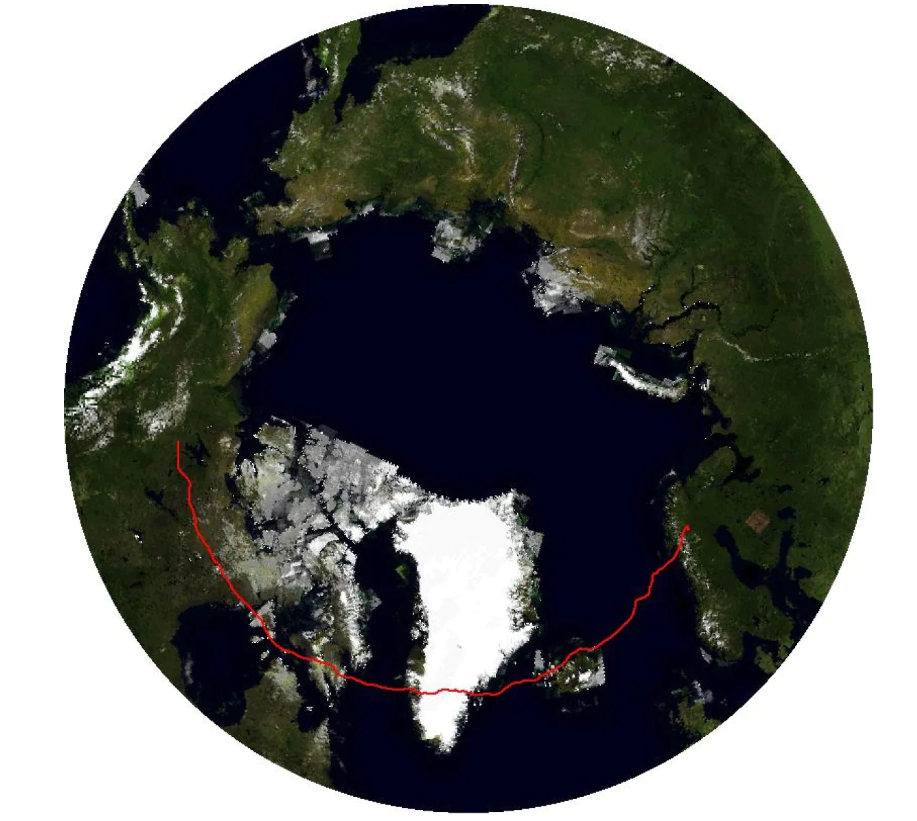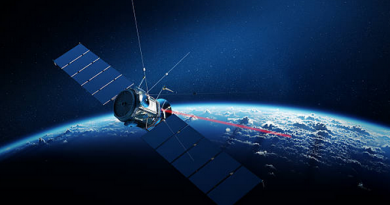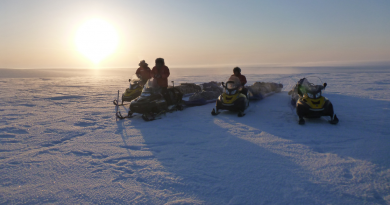Massive balloon examining black hole passes over Nunavut before landing in N.W.T.

From the ground, it looked like a second moon floating across the sky.
A research balloon that was the size of a football stadium recently passed over Nunavut and the N.W.T. studying the galaxy, and generating a buzz in some of the communities it travelled over.
The XL-Calibur — launched from Kiruna, Sweden, last week — was built by a team of 50 scientists from the U.S., Japan and Sweden to measure X-rays from black holes and neutron stars.
The journey lasted six days, seven hours and 45 minutes, and was a collaboration between NASA, Washington University in St. Louis (WUSTL) and KTH Royal Institute of Technology in Sweden.
A Twitter account for the XL-Calibur shared photos that were snapped by people in Norway, Iceland, and in Nunavut’s Arviat and Iqaluit. The balloon also passed over Yellowknife before Richard Bose, a senior research engineer at WUSTL, said the payload landed 80 kilometres away from Délı̨nę, N.W.T., on Monday.
XL-Calibur was seen from Arviat on the west side of Hudson Bay!
📷: Borma Jean Kablutsiak pic.twitter.com/Z0qd93BjG4— XL-Calibur (@SuperTigerLDB) July 17, 2022
Bose said NASA decided when to end the flight, a process that involved opening a hole in the balloon so it dropped from an elevation of 130,000 feet to about 50,000 feet. Then, the balloon and the telescope separated — the latter being carried to the ground with a parachute.
“Just missed some trees and definitely didn’t land in a lake, which is our biggest worry,” said Bose, who helped build part of the telescope and said that water probably wouldn’t have been kind to the rare and expensive mirrors it contains.

Jeremy Eggers, a communications official for NASA, told CBC News in an email the polyethylene film balloon landed nearly 20 kilometres away from the payload and that a team was being deployed to pick up all three parts.
Before terminating any flight, Eggers said NASA’s scientific balloon team does a survey to keep the public safe, to minimize environmental impacts and to make sure they can recover as much of the gear as possible.

“NASA considers environment impacts when conducting all of its scientific balloon missions and takes action to mitigate impacts,” he wrote, adding the organization worked with Canadian officials to coordinate XL-Calibur’s flight and landing spot.
Bose said XL-Calibur’s main focus is a black hole called Cygnus X1 that’s special because it’s soaking up gases from a nearby star.
“Black holes are very mysterious objects out there and of course you can’t really tell what’s happening in them because light can’t escape,” he said. But scientists can study things that happen near them, he said, like something “very intense” that’s generating X-rays near Cygnus X1.
“In the spirit of exploration and understanding what’s going on in our universe, it’s one piece of the fundamental research that we’re lucky to be able to fund.”
Related stories from around the North:
Canada: “Our climate is changing before our eyes,” says WMO upon release of new report, Eye on the Arctic
Greenland: Climate change accelerating ice loss from peripheral glaciers, Eye on the Arctic
Norway: Will the green transition be the new economic motor in the Arctic?, Eye on the Arctic
Sweden: Sweden’s climate policies closer to reaching goals, Radio Sweden
United States: Bering Sea ice at lowest extent in at least 5,500 years, study says, Alaska Public Media



